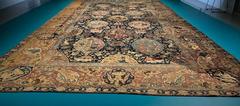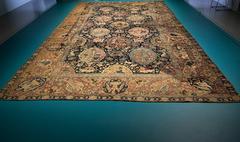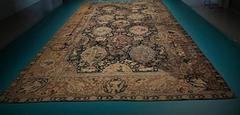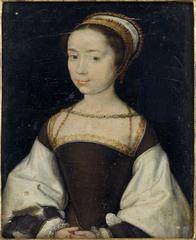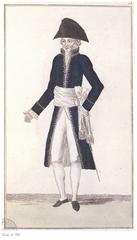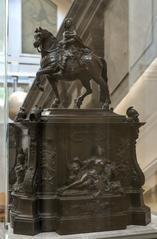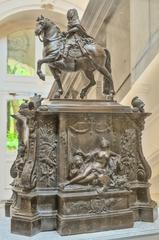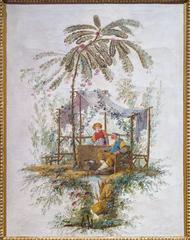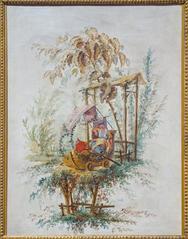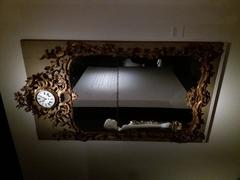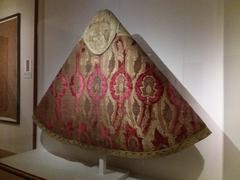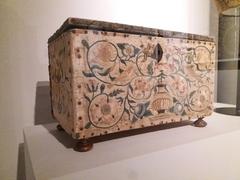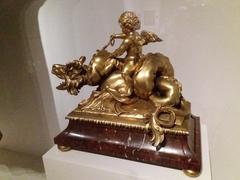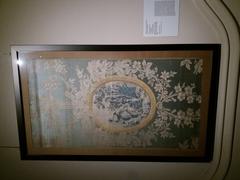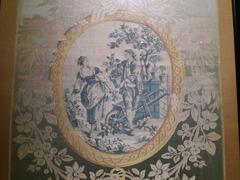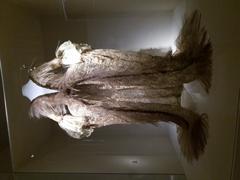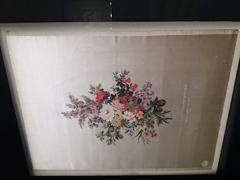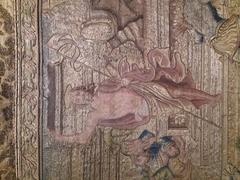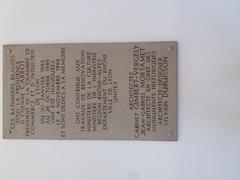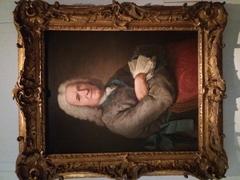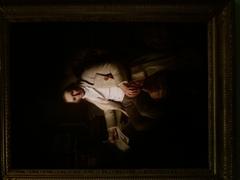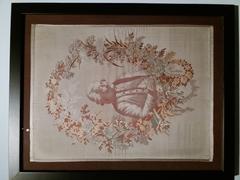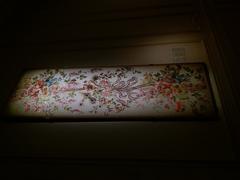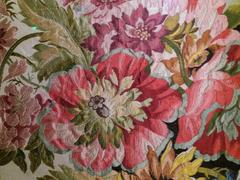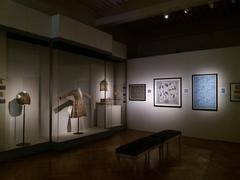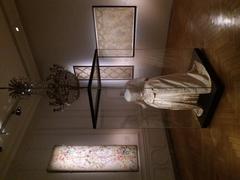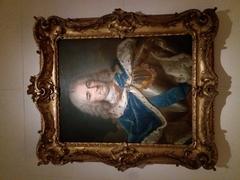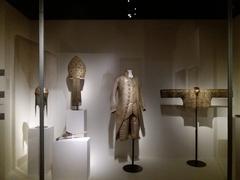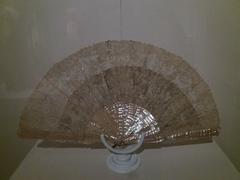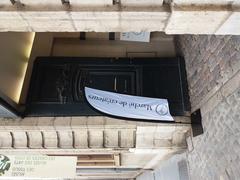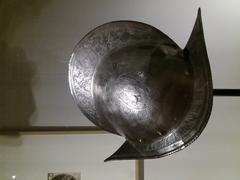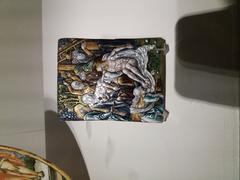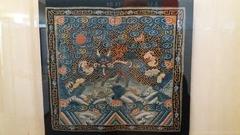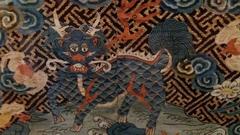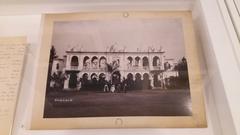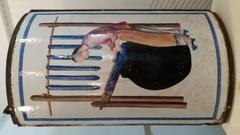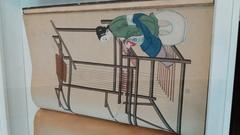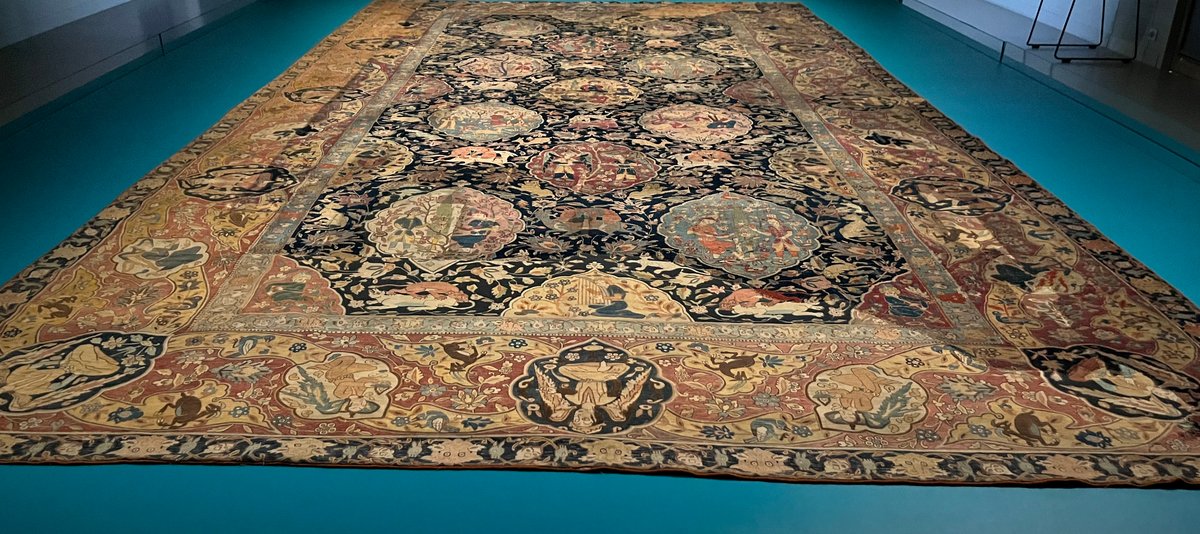
Textile Arts Museum Lyon: Visiting Hours, Tickets, and Complete Visitor Guide
Date: 14/06/2025
Introduction
Situated in the vibrant heart of Lyon’s Presqu’île district, the Textile Arts Museum (Musée des Tissus et des Arts Décoratifs) is an unparalleled institution dedicated to the preservation and celebration of textile artistry. Home to one of the world’s most extensive collections, the museum embodies Lyon’s legacy as a silk capital and a creative hub for decorative arts. Established in 1864, it spans over four millennia of textile history, from ancient Egyptian fragments to contemporary innovations, providing a dynamic lens into the evolution of techniques, cultural exchanges, and artistic trends.
The museum is set within two magnificent 18th-century townhouses—the Hôtel de Villeroy and Hôtel de Lacroix-Laval—both architectural treasures that echo Lyon’s historical association with luxury and craftsmanship. The museum’s narrative is deeply tied to the story of silk, the influence of royal patronage, and technological milestones such as the Jacquard loom, invented in Lyon in 1804. The enduring spirit of the Canuts, Lyon’s legendary silk weavers, infuses the museum with a rich human dimension.
Currently, the museum is closed for a major renovation project, scheduled for completion in 2030. During this period, visitors can still engage with Lyon’s textile heritage through off-site exhibitions and digital resources. This guide offers essential insights for planning your future visit, understanding the museum’s significance, and exploring the broader context of Lyon’s textile history (Musée des Tissus et des Arts Décoratifs; Visit Lyon; France.fr).
Contents
- Introduction
- Location and Setting
- Museum Layout and Atmosphere
- Collection Highlights and Exhibition Experience
- Historical Context and Significance
- Origins of the Museum
- Lyon: Silk Capital of Europe
- The Canuts: Artisans and Social Pioneers
- Visitor Information
- Visiting Hours and Tickets
- Accessibility
- Guided Tours and Special Events
- Nearby Attractions and Travel Tips
- Educational and Research Opportunities
- Visuals and Multimedia
- Frequently Asked Questions (FAQ)
- Conclusion
- Sources
Location and Setting
The museum is located at 34 rue de la Charité, in the heart of Lyon’s Presqu’île. The two adjoining 18th-century mansions, the Hôtel de Villeroy and Hôtel de Lacroix-Laval, provide a majestic, historically rich setting. The location is central, within walking distance of Place Bellecour, and easily accessible by Metro lines A and D (Bellecour station), as well as by bus, Vélo’V bike stations, and nearby public parking (patrimoine-lyon.org).
Museum Layout and Atmosphere
The museum consists of two primary wings: the Textile Museum and the Decorative Arts Museum. Each occupies a separate section of the historic mansions, and visitors experience both the breadth of the collections and the elegance of Lyon’s silk era through ornate woodwork, period furnishings, and grand salons. The architectural heritage is an integral part of the museum experience, immersing visitors in the ambiance of Lyon’s golden age.
Collection Highlights and Exhibition Experience
Scope of the Collection
Boasting over 2.5 million objects, the museum’s collection spans 4,500 years and all continents. Notable highlights include:
- Ancient Textiles: Egyptian fabric fragments (c. 2000 BCE), Coptic tapestries, rare Persian rugs.
- Silk Masterpieces: Velours à grands dessins and velours au sabre from Lyon’s peak as a silk capital.
- Fashion and Costumes: Royal garments, everyday wear, and woven silk portraits.
- Technical Innovations: Jacquard looms, pattern cards, and models demonstrating the evolution of weaving.
- Decorative Arts: Furniture, ceramics, jewelry, paintings, and objets d’art, particularly from the 18th century.
The museum also celebrates renowned figures such as Jean Revel, Philippe de Lasalle, Joseph-Marie Jacquard, and Jean-François Bony, whose work elevated Lyon’s reputation in textile arts (visitonslyon.com).
Thematic and Temporary Exhibitions
Special exhibitions address topics such as haute couture, textile trade, and the intersection of textiles with contemporary art. The museum’s expertise in both historical and modern textile innovation ensures a fresh perspective with each visit.
Historical Context and Significance
Origins of the Textile Arts Museum
Founded in 1864 as the Musée d’Art et d’Industrie, the museum was established to safeguard and promote Lyon’s textile heritage after inspiring encounters with the Great Exhibition in London and the Victoria & Albert Museum. Lyon’s silk manufacturers intended the museum to reinforce the city’s leadership in silk production and design excellence (patrimoine-lyon.org).
Lyon: Silk Capital of Europe
Lyon’s prominence in silk began in the 15th century under royal patronage. By the 17th century, reforms under Jean-Baptiste Colbert further solidified the city’s role as Europe’s silk capital. The Croix-Rousse district became home to the Canuts, skilled artisans whose legacy remains integral to Lyon’s identity (frenchmoments.eu; metmuseum.org).
The Canuts: Artisans and Social Pioneers
The Canuts were not only master weavers but also pioneers of social change. Their expertise with the Jacquard loom revolutionized textile production, and their 19th-century labor revolts are among Europe’s earliest recorded workers’ movements. The museum, together with the Maison des Canuts, explores these social and technological milestones (france.fr).
Research, Education, and Global Impact
The museum is a global leader in textile research and conservation, home to the Centre International d’Études des Textiles Anciens (CIETA) since 1954. Its workshops, library, and archives attract scholars, designers, and textile enthusiasts worldwide, documenting the evolution of textile techniques and cultural exchanges (visitonslyon.com).
Recent Renovation and Future Vision
Since 2017, the museum has been managed by the Auvergne-Rhône-Alpes Region, which has initiated a €50–60 million renovation to modernize facilities, enhance accessibility, and preserve its architectural heritage. The full reopening is anticipated in 2030, with a partial reopening of the Hôtel de Lacroix-Laval in 2026 (patrimoine-lyon.org).
Visitor Information: Hours, Tickets, and Accessibility
Current Status (2025)
- Closed for Renovation: The museum is fully closed, with reopening planned for 2030. Some off-site exhibitions and digital resources may be available.
- Location: 34 rue de la Charité, 69002 Lyon
Standard Visiting Hours (Before Renovation)
- Tuesday to Sunday: 10:00 AM – 6:00 PM
- Closed Mondays and holidays
Ticket Prices (Before Renovation)
- General Admission: €8
- Reduced Rate: €5 (students, seniors)
- Free Entry: Under 18, Lyon City Card holders
- Lyon City Card: Includes entry and public transport (Travel to Lyon)
Accessibility
- Wheelchair accessible (some limitations in historic areas)
- Assistance and adapted materials available for visitors with disabilities
Getting There
- Public Transport: Metro lines A and D (Bellecour station); several bus routes
- Parking: Nearby public lots
Guided Tours and Events
- Guided tours in French and English available when open; advance booking recommended
- Special events, workshops, and educational activities continue off-site during renovations
Educational and Research Opportunities
The museum is a center for learning and scholarship, hosting CIETA and offering workshops, lectures, and resources for students and professionals. Its library contains over 30,000 works, supporting ongoing research in textile history and conservation.
Visuals and Multimedia
Visitors can access high-quality images, maps, and virtual tours via the museum’s official website. These resources provide immersive previews of the collections and historic buildings.
Nearby Attractions and Travel Tips
- Croix-Rousse District: Explore the historic silk-weaving neighborhood and Maison des Canuts
- Basilica of Notre-Dame de Fourvière: Panoramic views and architectural splendor
- Presqu’île: Shops, cafés, and other museums such as Musée des Beaux-Arts
- Travel Tips: Visit on weekday mornings to avoid crowds; combine your museum visit with local gastronomy and other Lyon historical sites (France.fr)
Frequently Asked Questions (FAQ)
Q: When will the museum reopen?
A: The museum is expected to fully reopen in 2030, with partial access in 2026.
Q: How can I buy tickets?
A: Ticket sales will resume when the museum reopens; check the official website for updates.
Q: Are guided tours available?
A: Yes, guided tours will be available upon reopening; off-site events may offer alternatives in the meantime.
Q: Is the museum accessible?
A: The renovated museum will enhance accessibility, but some historic areas may retain limitations.
Q: What can I do during closure?
A: Explore off-site exhibitions, digital resources, and related Lyon museums.
Conclusion
The Textile Arts Museum Lyon is a vital guardian of the city’s textile and decorative arts heritage. Its vast collections, innovative research, and dynamic programming offer visitors an enriching journey through centuries of artistry and craftsmanship. While the museum is closed for renovation, Lyon’s textile legacy remains alive through off-site events, digital initiatives, and the city’s living traditions. Stay informed by checking the official museum website for reopening news, and enrich your experience by exploring neighboring historical sites and engaging with Lyon’s vibrant cultural scene.
For guided tours, travel tips, and the latest updates, download the Audiala app and follow us on social media.
Sources and Further Reading
- Musée des Tissus et des Arts Décoratifs Lyon: Visiting Hours, Tickets, History & Travel Tips, 2025 (patrimoine-lyon.org)
- Textile Arts Museum Lyon: Visiting Hours, Tickets & Exploring Lyon’s Historic Textile Heritage, 2025 (traveltolyon.com)
- Textile Arts Museum Lyon: Visiting Hours, Tickets, and Essential Guide to Lyon’s Historic Textile Heritage, 2025 (museedestissus.fr)
- Musée des Tissus Lyon: Visiting Hours, Tickets & Exploring Lyon’s Rich Textile Heritage, 2025 (france.fr)
- Textile production in Europe: Silk 1600-1800, The Metropolitan Museum of Art (metmuseum.org)
